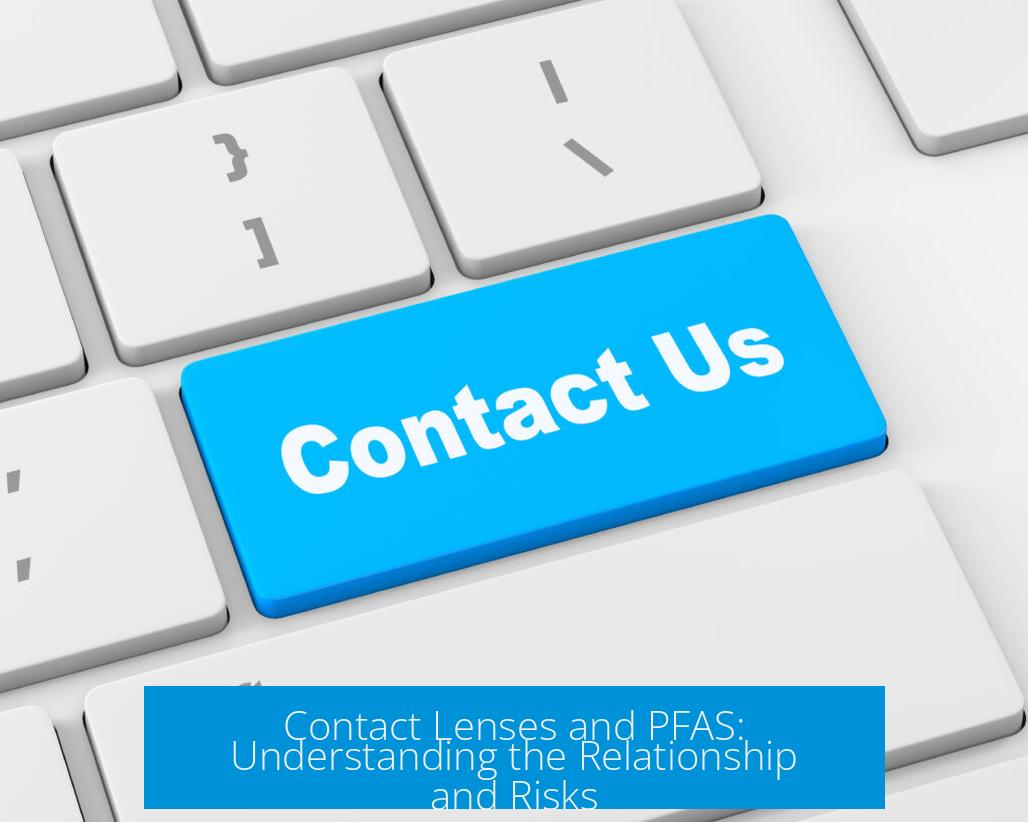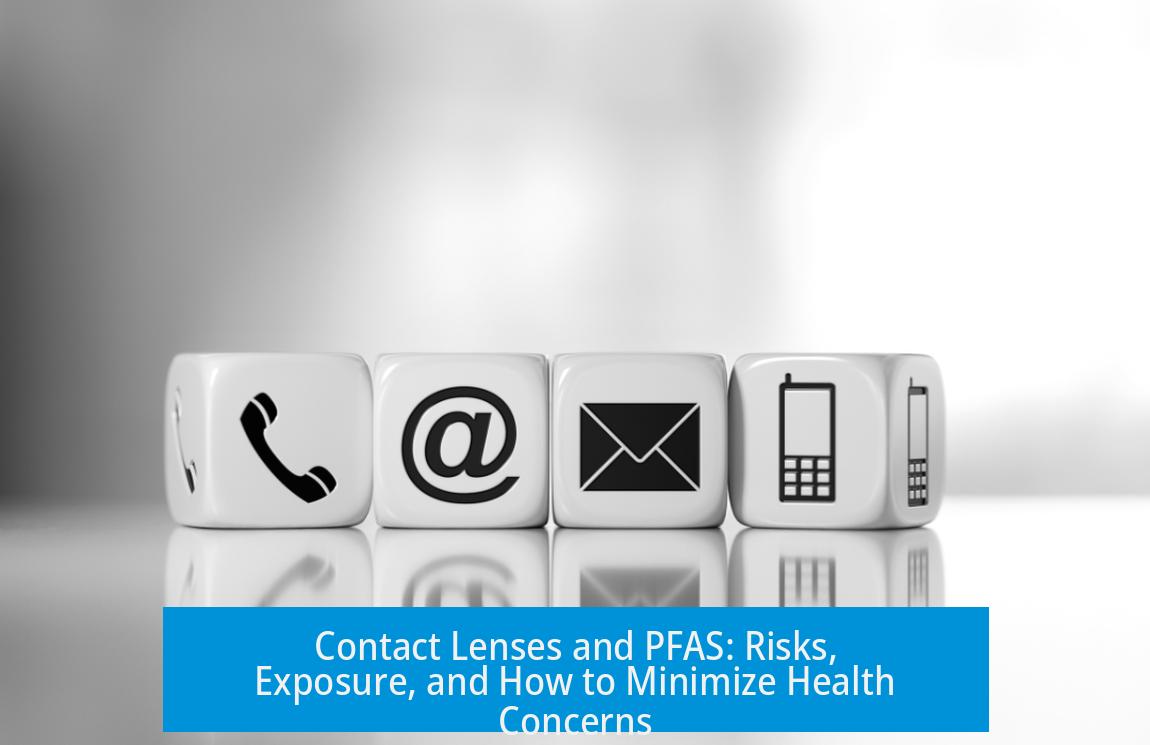Contact Lenses and PFAS: Understanding the Relationship and Risks

Contact lenses sometimes include fluorinated polymers, but these are not the same as the harmful PFAS chemicals. The primary exposure concern for PFAS is through contaminated drinking water, not through direct contact such as wearing lenses. However, a 2024 study shows contact lens wearers have elevated serum PFAS levels. Legal cases regarding PFAS-containing lenses are ongoing, while some lens types offer reduced PFAS exposure.
What Are PFAS and How Do They Differ from Fluorinated Polymers in Contact Lenses?
Per- and polyfluoroalkyl substances (PFAS) are a large group of human-made chemicals that include fluorine atoms. These substances resist degradation and accumulate in the environment, causing health concern. However, not all fluorine-containing materials are PFAS.
Some contact lenses contain fluorinated polymers. These help improve oxygen permeability and durability. But these polymers differ chemically and structurally from PFAS known for toxicity.
- PFAS have specific molecular structures and persistence causing harm upon accumulation.
- Fluorinated polymers in lenses do not necessarily share these harmful properties.
- The presence of fluorine alone does not imply danger.
“TNT contains only carbon, hydrogen, nitrogen and oxygen but is explosive. Amino acids have the same elements but are not harmful. Similarly, fluorine in lenses is not equivalent to toxic PFAS.”
PFAS Exposure from Contact Lenses versus Drinking Water

The dominant public worry is PFAS contamination found in drinking water supplies. Regulatory agencies like the EPA are setting strict limits on PFAS levels in water, ranging from 2 to 10 parts per trillion (ppt).
Exposure through the skin or via contact lenses is much less significant than ingestion. PFAS is primarily harmful due to long-term environmental accumulation and ingestion of contaminated water or food.
- PFAS enter the environment mainly from industrial and consumer product waste.
- Drinking water contamination leads to internal exposure and buildup in the body.
- PFAS contact via skin or contact lenses is minimal and less studied for risk.
An environmental impact example: millions of acres of farmland in the US have PFAS contamination through treated wastewater used for irrigation.
Recent Scientific Study on PFAS Levels in Contact Lens Wearers
A 2024 population-based study compared serum PFAS levels between contact lens wearers and non-wearers. Findings showed that wearers exhibited higher PFAS in their blood.
- The study did not analyze specific lens brands or models.
- It examined a general young adult cohort to establish a correlation with contact lens use.
- The mechanisms of PFAS transfer from lenses to the body are not fully understood.
This finding raises valid concerns regarding PFAS exposure from contact lenses, though causation and risk magnitude require further research.
Legal and Consumer Reactions to PFAS in Contact Lenses
There is a current class action lawsuit related to contact lenses containing PFAS. Some users express worry about prolonged exposure through lenses that might leach PFAS over time. The legal actions indicate industry and consumer attention to this issue.
Conversely, some lenses on the market do not contain PFAS components. Consumers may opt for these to minimize risk.
“I wear my lenses 1-2 hours per night, not daily, and choose carefully. Peace of mind justifies the extra cost.”
How to Minimize PFAS Exposure from Contact Lenses
Consumers seeking to reduce PFAS exposure should consider lens types less likely to contain harmful fluorinated materials.
- Silicone hydrogel lenses are recommended.
- They are not made directly from fluoropolymers.
- These lenses may contain trace PFAS residues from manufacturing but at much lower levels.
- They likely release fewer PFAS chemicals during wear.
Consistent adherence to lens hygiene remains essential for safety regardless of lens material.
Regulatory and Educational Resources on PFAS
To understand PFAS risks comprehensively, consumers and healthcare providers can consult authoritative sources such as the EPA.
- EPA PFAS Explained covers chemical nature, uses, and health effects.
- EPA Drinking Water Limits detail regulatory standards for water safety.
- Advocacy groups provide guidance on reducing exposure in daily life.
Media coverage provides context but should be evaluated critically against scientific consensus.
Media article on PFAS in contact lenses
Summary of Key Points
- Fluorinated polymers in contact lenses differ from harmful PFAS compounds.
- PFAS exposure primarily occurs through contaminated drinking water, not lens wear.
- A 2024 study found higher blood PFAS levels in contact lens users, but brand-specific risks remain unclear.
- Legal actions target PFAS-containing lenses, reflecting rising consumer concerns.
- Silicone hydrogel lenses offer a practical way to reduce PFAS exposure.
- Consult EPA and scientific sources for accurate information on PFAS and health.
Are the fluorinated materials in contact lenses the same as harmful PFAS chemicals?
No. Fluorinated polymers in some contacts are not the same as PFAS compounds of concern. Not all fluorine-containing substances are harmful or PFAS.
Can wearing contact lenses increase PFAS levels in the body?
A 2024 study found that contact lens wearers had higher serum PFAS levels compared to non-wearers. This suggests lenses might contribute to PFAS exposure over time.
What is the main source of PFAS exposure for consumers?
The primary concern is PFAS contamination in drinking water, not skin absorption from contact lenses. Environmental contamination poses larger risks.
Are there safer alternatives to minimize PFAS exposure from contact lenses?
Silicone hydrogel lenses are recommended. They have lower PFAS content and less chance to leach PFAS compared to fluoropolymer-based lenses.
Is there any legal action regarding PFAS in contact lenses?
Yes. A class action lawsuit is underway over contact lenses containing PFAS. Some brands without PFAS exist, and prolonged use of some lenses might pose risks.





Leave a Comment